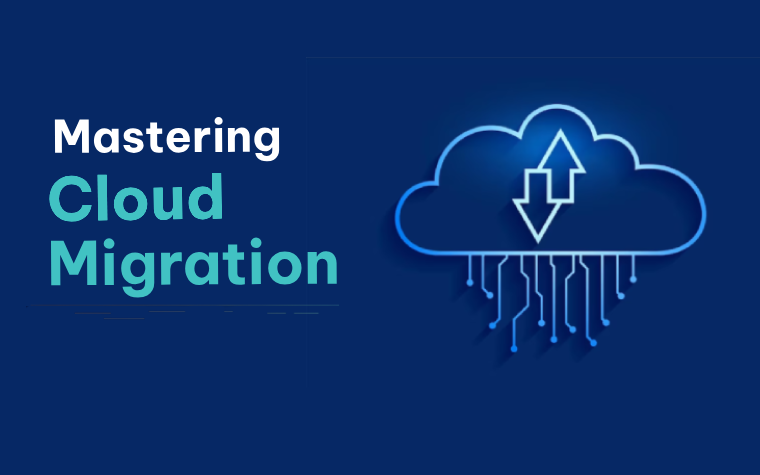
Mastering Cloud Migration: Best Practices for a Seamless Transition
In today’s rapidly evolving technological landscape, cloud migration has become a critical step for organizations looking to leverage the benefits of the cloud. Whether it’s scalability, cost efficiency, or enhanced flexibility, businesses are increasingly recognizing the value of migrating their infrastructure, applications, and data to the cloud. To migrate to the cloud successfully, you must adhere to best practices and prepare carefully. In this article, we will explore the key considerations and strategies to master the art of cloud migration for a seamless transition.
1. Understanding Cloud Migration
Cloud migration refers to the process of transferring an organization’s IT assets, including infrastructure, applications, and data, from on-premises environments to cloud-based solutions. The cloud offers numerous advantages, such as reduced operational costs, increased agility, and improved scalability. However, it’s essential to understand the challenges associated with cloud migration to ensure a smooth transition.
Definition and benefits
Cloud migration involves the transition of IT resources to a cloud environment, typically provided by a third-party cloud service provider. By migrating to the cloud, organizations can enjoy benefits like:
- Scalability: Cloud platforms allow businesses to easily scale their resources up or down based on demand, ensuring optimal performance and cost efficiency.
- Cost savings: Cloud migration can eliminate the need for significant upfront infrastructure investments and reduce ongoing operational costs.
- Flexibility: Cloud environments offer greater flexibility, enabling teams to access resources and applications from anywhere, at any time.
- Reliability: Cloud providers often offer robust infrastructure and redundant systems, ensuring high availability and disaster recovery capabilities.
Common challenges
While cloud migration offers numerous benefits, it also poses several challenges that organizations must overcome. Some common challenges include:
- Legacy infrastructure: Organizations with outdated or complex legacy systems may face difficulties in migrating their infrastructure to the cloud.
- Data transfer and integrity: Transferring large volumes of data to the cloud while ensuring its integrity and security can be a complex and time-consuming process.
- Application compatibility: Not all applications are designed to run seamlessly in cloud environments, requiring organizations to assess compatibility and make necessary modifications.
- Security and compliance: Ensuring data security and compliance with industry regulations can be challenging in the cloud, necessitating robust security measures and careful planning.
2. Preparing for Cloud Migration
Before embarking on a cloud migration journey, it’s crucial to adequately prepare and plan for the transition. This involves several key steps, including assessing your current environment, creating a migration strategy, and setting goals and expectations.
Assessing your current environment
Start by performing a thorough evaluation of your current IT infrastructure, apps, and data. Identify any dependencies, interdependencies, and potential roadblocks that may impact the migration process. This evaluation will provide insights into what needs to be migrated, optimized, or retired.
Creating a migration strategy
Develop a well-defined migration strategy that outlines the overall approach, timeline, and specific tasks required for a successful migration. Consider factors like resource allocation, risk mitigation, and stakeholder communication during the planning phase. A robust migration strategy will serve as a roadmap for the entire process.
Setting goals and expectations
Establish clear goals and expectations for the cloud migration project. Define key performance indicators (KPIs) to measure success, such as improved application performance, reduced infrastructure costs, or enhanced security. Aligning these goals with the organization’s overall business objectives will ensure a focused and successful migration.
3. Choosing the Right Cloud Provider
Selecting the appropriate cloud provider is a crucial decision that can significantly impact the success of your migration. Evaluate different providers based on factors like scalability, security, cost, and the specific requirements of your organization. Consider factors such as:
- Scalability: Ensure the cloud provider can accommodate your organization’s current and future scalability needs, allowing for seamless growth.
- Security: Assess the provider’s security measures, certifications, and compliance standards to ensure the safety and integrity of your data.
- Cost: Compare pricing models, storage costs, and data transfer fees to determine the most cost-effective option for your organization.
- Service offerings: Evaluate the range of services and tools provided by the cloud provider, such as database management, analytics, or machine learning capabilities, to support your specific requirements.
Once you have selected a cloud provider, establish a partnership and collaborate closely with their team throughout the migration process.
4. Data Migration
Data migration is a critical task of cloud migration that requires careful planning and execution. To ensure a smooth and secure transfer of data, consider the following steps:
Analyzing and categorizing data
Begin by analyzing and categorizing your data based on factors like sensitivity, importance, and regulatory requirements. This analysis will help determine the appropriate migration methods, such as bulk transfer, incremental sync, or database replication.
Planning the migration process
Develop a detailed migration plan that outlines the steps, timelines, and responsibilities for each data transfer task. Consider factors like data bandwidth limitations, potential downtime, and any necessary data transformations or format conversions.
Ensuring data integrity and security
Implement data encryption and secure transmission protocols to protect sensitive data during the migration process. Regularly validate the integrity of migrated data to ensure its accuracy and completeness. Conduct thorough testing to identify and address any data-related issues before fully transitioning to the cloud.

5. Application Migration
Migrating applications to the cloud requires careful assessment, planning, and validation to ensure their compatibility and optimal performance. Consider the following steps:
Assessing application compatibility
Evaluate the compatibility of your existing applications with the target cloud environment. Identify any dependencies or modifications required for successful migration. Consider factors like operating system compatibility, database requirements, and third-party integrations.
Refactoring or re-architecting applications
When migrating applications, you may need to refactor or re-architect them to leverage the full benefits of the cloud. This may involve optimizing application code, redesigning components, or adopting cloud-native architectures like microservices.
Testing and validating migrated applications
Thoroughly test migrated applications in the cloud environment to ensure their functionality, performance, and scalability. Conduct load testing, security testing, and user acceptance testing to identify any potential issues and address them before going live.
6. Security and Compliance
Maintaining robust security and compliance measures is essential when migrating to the cloud. Consider the following best practices:
Implementing security measures in the cloud
Implement a multi-layered security approach that includes encryption, access controls, identity and access management (IAM), and network security. Leverage cloud provider tools and services to enhance security, such as virtual private networks (VPNs), firewalls, and intrusion detection systems.
Meeting compliance requirements
Understand and adhere to industry-specific compliance regulations when migrating sensitive data or applications to the cloud. Ensure that your cloud provider offers the necessary compliance certifications and can support your compliance needs.
Monitoring and managing security risks
Continuously monitor and manage security risks in the cloud environment. Implement robust monitoring and logging mechanisms to detect and respond to security incidents promptly. Regularly review access controls, update security patches, and conduct security audits to maintain a secure cloud infrastructure.
7. Performance Optimization
Optimizing performance in the cloud environment is crucial to ensure smooth operations and efficient resource utilization. Consider the following optimization strategies:
Optimizing cloud resources and configurations
Regularly review and optimize cloud resource allocation to align with your organization’s requirements. Scale resources up or down based on demand, leverage auto-scaling capabilities, and implement resource tagging and tracking mechanisms.
Scaling applications and services
Leverage the scalability features of the cloud to accommodate fluctuating workloads. Implement horizontal scaling by distributing workloads across multiple instances or containers. Use load balancers and caching mechanisms to improve application performance and responsiveness.
Monitoring and improving performance metrics
Establish comprehensive performance monitoring and analytics systems to track key performance metrics. Use tools provided by your cloud provider to analyze metrics like response times, throughput, and resource utilization. Identify bottlenecks and implement optimizations to enhance overall performance.
8. Post-Migration Considerations
Once the migration is complete, there are several post-migration considerations to ensure ongoing success and optimization:
Conducting post-migration testing
Validate the functionality, performance, and security of your migrated systems through rigorous testing. Address any issues or gaps that may have surfaced during the migration process. Engage end-users to provide feedback and identify any usability or performance concerns.
Optimizing costs and resource allocation
Regularly review and optimize your cloud costs to maximize cost efficiency. Utilize tools and services offered by your cloud provider to monitor and manage resource usage, identify cost-saving opportunities, and right-size your infrastructure.
Establishing proper governance and management
Implement robust governance and management practices to maintain control and visibility over your cloud environment. Establish clear policies, access controls, and monitoring mechanisms. Regularly review and update these practices to align with your evolving business needs.
Conclusion
Mastering cloud migration requires careful planning, execution, and adherence to best practices. By understanding the challenges associated with cloud migration, preparing adequately, choosing the right cloud provider, and following data migration, application migration, security, performance optimization, and post-migration considerations, organizations can achieve a seamless transition to the cloud. Embrace the benefits of scalability, cost savings, flexibility, and reliability that the cloud offers, while ensuring data security, compliance, and optimized performance.



